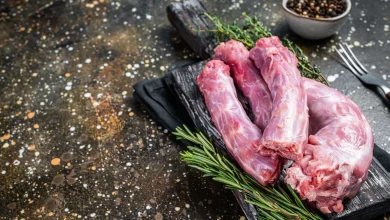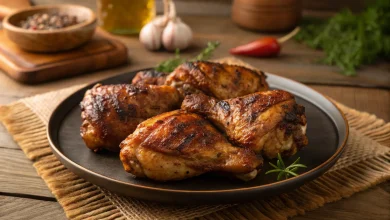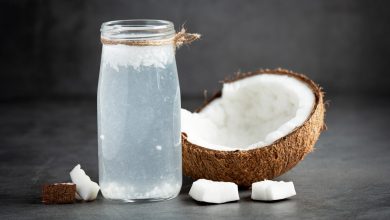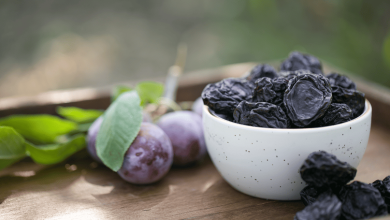White Short-Grain Rice (Raw, Uncooked)
White short-grain rice is a popular staple in many cuisines, renowned for its tender texture and slightly sticky consistency when cooked. This variety of rice, uncooked and in its raw form, has a subtle flavor that pairs beautifully with a wide array of savory and sweet dishes. It is especially favored in Asian cooking and is a key ingredient in dishes such as sushi, rice puddings, and rice bowls.
Nutritional Information (per 100g serving)
| Nutrient | Amount |
|---|---|
| Energy | 358 kcal |
| Protein | 6.5 g |
| Fat | 0.52 g |
| Saturated Fat | 0.14 g |
| Carbohydrates | 79.15 g |
| Fiber | 0.0 g |
| Sugar | 0.0 g |
| Calcium | 3 mg |
| Iron | 0.8 mg |
| Magnesium | 23 mg |
| Phosphorus | 95 mg |
| Potassium | 76 mg |
| Sodium | 1 mg |
| Zinc | 1.1 mg |
| Copper | 0.21 mcg |
| Manganese | 1.037 mg |
| Selenium | 0.0 mcg |
| Vitamin C | 0.0 mg |
| Thiamine (B1) | 0.07 mg |
| Riboflavin (B2) | 0.048 mg |
| Niacin (B3) | 1.6 mg |
| Vitamin B6 | 0.171 mg |
| Folate | 6.0 mcg |
| Vitamin B12 | 0.0 mcg |
| Vitamin A | 0.0 mcg |
| Vitamin E | 0.0 mg |
| Vitamin D2 | 0.0 mcg |
Allergen Information
White short-grain rice is naturally gluten-free and safe for individuals with gluten sensitivity or celiac disease. There are no known common allergens associated with white rice in its raw, unprocessed form. However, those with rice allergies (which are rare) should avoid consuming it.
Dietary Preferences
- Gluten-Free: Suitable for those following a gluten-free diet.
- Vegan & Vegetarian: This rice is plant-based and can be enjoyed by both vegans and vegetarians.
- Low in Fat & Sugar: White short-grain rice is a healthy source of carbohydrates with minimal fats and sugars, making it suitable for those watching their fat or sugar intake.
Cooking Tips & Advice
- How to Cook: Short-grain rice requires a bit more water than other types of rice due to its higher starch content, which gives it its signature sticky texture. Typically, a ratio of 1 cup rice to 1.5 cups of water works well for cooking on the stovetop. Rinse the rice before cooking to remove excess starch and prevent it from becoming too sticky.
- Storage: Store uncooked rice in an airtight container in a cool, dry place. It can typically last for up to 6 months when stored properly.
- Flavor Pairings: Short-grain rice complements a variety of savory dishes, including stir-fries, curries, and soups. It can also be used in desserts such as rice pudding or served with fruits like mango for a sweet treat.
Conclusion
White short-grain rice is a versatile and essential ingredient for countless culinary applications. It provides a good source of energy, moderate protein, and several key minerals like phosphorus, magnesium, and manganese. Its soft, sticky texture makes it the perfect companion to both savory and sweet dishes, while being a great option for those seeking a gluten-free, vegan, and low-fat carbohydrate source.










